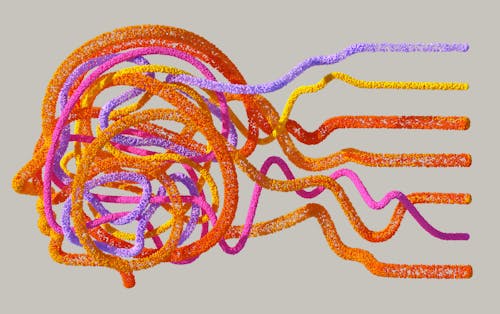
The National Institutes of Health (NIH) recently initiated a series of grant terminations focused on topics not aligned with agency priorities.1 The scope of terminations, types of grants affected, and differential impact of cuts across career stages have not been characterized, resulting in uncertainty about the implications of grant terminations on the US health research enterprise. 2 ,3 Therefore, this study quantified the number and corresponding funding amounts of terminated NIH grants overall and by institute or center and award type.
We used the Tracking Accountability in Government Grants System database to identify all grants awarded by the US Department of Health and Human Services that were terminated since the start of the current presidential administration.4 Only grants where the NIH was listed as the awarding office were analyzed. The activity code and administering institute or center were derived from the Federal Award Identification Number. Grants were categorized as research project grants, early career grants, center grants, or other grants based on their activity codes per NIH definitions.5 The number of terminated grants, obligated funding dollars, and unexpended funding dollars were summed across administering institutes and centers and award types. Proportions of terminated grants and funding dollars across all previously active grants were calculated. To evaluate the relative size of terminated grants, we calculated the ratio of the proportion of terminated funding dollars to the proportion of terminated grants across institutes and centers. The RePORTER tool—a repository of all NIH funding—was used to determine total grant and funding denominators of active projects before grant terminations. Data were obtained on April 25, 2025, and analyses were performed using R version 4.4.3 (R Foundation).
Between February 28, 2025, and April 8, 2025, 694 NIH grants were terminated across 24 of the 26 institutes and centers (including the Office of the Director) that administered active NIH grants. No grants administered by the NIH Clinical Center or the National Center for Complementary and Integrative Health were terminated. The cumulative amount of terminated grant funding was $1.81 billion, of which $544 024 077 (30.0%) had not been expended at the time of grant termination. Across 210 recipient institutions, Columbia University (n = 157), Johns Hopkins University (n = 19), Yale University (n = 14), Emory University (n = 14), University of Michigan (n = 14), Northwestern University (n = 13), University of California San Francisco (n = 13), University of Miami (n = 12), University of Pittsburgh (n = 10), and University of Maryland (n = 10) experienced the highest number of grant terminations.

The largest number of terminated grants was administered by the National Institute of Mental Health (n = 128) and the National Institute on Minority Health and Health Disparities (NIMHD; n = 77) (Table 1). The dollar amount of terminated grant funding was highest for the National Institute of Allergy and Infectious Diseases ($505 968 126) and the NIMHD ($223 566 041). Across all institutes and centers, the NIMHD accounted for the greatest proportion of terminated grants relative to previously active grants (77/864 [8.9%]) and the highest proportion of terminated funding relative to previously active funding ($223 566 041/$755 275 779 [29.6%]). The ratio of the proportion of terminated funding to the proportion of terminated grants across institutes and centers ranged from 0.5 to 11.9.
Across 694 terminated grants, 400 (57.6%) were research project grants, 139 (20.0%) were early career grants, 111 (16.0%) were other grants, and 44 (6.3%) were center grants (Table 2). Within award types, the dollar amount of terminated grant funding was largest among R01 grants (n = 229; $470 994 788), followed by U54 grants (n = 31; $211 796 665), T32 grants (n = 27; $44 947 561), and OT2 grants (n = 36; $37 188 312).
Targeted grant terminations have affected more than $1.8 billion in NIH funding. Terminations were spread across nearly all NIH institutes and centers, although cuts disproportionately impacted the NIMHD (30% of all funding).
The proportion of terminated grant funding was higher than the proportion of grants terminated across most institutes and centers, suggesting that larger-than-average grants were more likely to be terminated. Although most terminated grants were classified as independent research projects, 20% were formal training, fellowship, or career development awards.6 Study findings also demonstrate that grant terminations have affected both public and private recipient institutions across the US.
Study limitations include an inability to systematically categorize topic areas of terminated grants and lack of data on the specific reasons for grant terminations.
The landscape of NIH grant terminations continues to evolve dynamically. Ongoing monitoring and data transparency will be critical for understanding the impact of grant terminations on the US health research enterprise.
Supervision: Patel, Krumholz.
Conflict of Interest Disclosures: Mr Kadakia reported receiving professional fees from the Common Health Coalition and Journal of the American College of Cardiology outside the submitted work. Dr Krumholz reported receiving options from Element Science and identifeye HEALTH for advisory roles; payments from F-Prime for advisory roles; being a cofounder of and holding equity in Hugo Health, Refactor Health, and ENSIGHT-AI; and being associated with research contracts through Yale University from Janssen, Kenvue, Novartis, and Pfizer. No other disclosures were reported.

 Welcome to Narrative Mindworks!
Welcome to Narrative Mindworks!